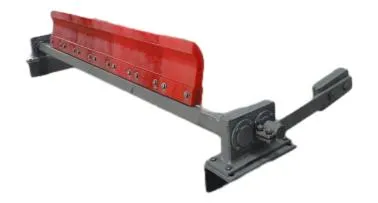 Afrikaans
Afrikaans  Albanian
Albanian  Amharic
Amharic  Arabic
Arabic  Armenian
Armenian  Azerbaijani
Azerbaijani  Basque
Basque  Belarusian
Belarusian  Bengali
Bengali  Bosnian
Bosnian  Bulgarian
Bulgarian  Catalan
Catalan  Cebuano
Cebuano  Corsican
Corsican  Croatian
Croatian  Czech
Czech  Danish
Danish  Dutch
Dutch  English
English  Esperanto
Esperanto  Estonian
Estonian  Finnish
Finnish  French
French  Frisian
Frisian  Galician
Galician  Georgian
Georgian  German
German  Greek
Greek  Gujarati
Gujarati  Haitian Creole
Haitian Creole  hausa
hausa  hawaiian
hawaiian  Hebrew
Hebrew  Hindi
Hindi  Miao
Miao  Hungarian
Hungarian  Icelandic
Icelandic  igbo
igbo  Indonesian
Indonesian  irish
irish  Italian
Italian  Japanese
Japanese  Javanese
Javanese  Kannada
Kannada  kazakh
kazakh  Khmer
Khmer  Rwandese
Rwandese  Korean
Korean  Kurdish
Kurdish  Kyrgyz
Kyrgyz  Lao
Lao  Latin
Latin  Latvian
Latvian  Lithuanian
Lithuanian  Luxembourgish
Luxembourgish  Macedonian
Macedonian  Malgashi
Malgashi  Malay
Malay  Malayalam
Malayalam  Maltese
Maltese  Maori
Maori  Marathi
Marathi  Mongolian
Mongolian  Myanmar
Myanmar  Nepali
Nepali  Norwegian
Norwegian  Norwegian
Norwegian  Occitan
Occitan  Pashto
Pashto  Persian
Persian  Polish
Polish  Portuguese
Portuguese  Punjabi
Punjabi  Romanian
Romanian  Russian
Russian  Samoan
Samoan  Scottish Gaelic
Scottish Gaelic  Serbian
Serbian  Sesotho
Sesotho  Shona
Shona  Sindhi
Sindhi  Sinhala
Sinhala  Slovak
Slovak  Slovenian
Slovenian  Somali
Somali  Spanish
Spanish  Sundanese
Sundanese  Swahili
Swahili  Swedish
Swedish  Tagalog
Tagalog  Tajik
Tajik  Tamil
Tamil  Tatar
Tatar  Telugu
Telugu  Thai
Thai  Turkish
Turkish  Turkmen
Turkmen  Ukrainian
Ukrainian  Urdu
Urdu  Uighur
Uighur  Uzbek
Uzbek  Vietnamese
Vietnamese  Welsh
Welsh  Bantu
Bantu  Yiddish
Yiddish  Yoruba
Yoruba  Zulu
Zulu belt drive idler pulley
Understanding Belt Drive Idler Pulleys Function, Design, and Applications
Belt drive systems are a fundamental aspect of many mechanical setups, from simple machines to complex industrial equipment. Among the critical components of these systems is the idler pulley. While it may seem like a minor part, the idler pulley plays a crucial role in ensuring the smooth operation of belt drives, thereby enhancing efficiency and longevity in various applications.
What is an Idler Pulley?
An idler pulley is a wheel that guides and maintains the tension of a belt in a belt drive system. Its primary function is to redirect the belt’s path, often in conjunction with other pulleys, without transmitting power itself. Unlike drive pulleys, which actively transfer power from one component to another, idler pulleys support the belt's movement and contribute to the overall stability of the system.
The Importance of Tension
One of the primary roles of the idler pulley is to maintain proper tension on the belt. In any mechanical system that employs a belt drive, consistent tension is crucial for effective power transmission. Insufficient tension can lead to slippage, reduced efficiency, and premature wear of the belt and pulleys. Conversely, excessive tension can strain bearings and other components, potentially causing failure.
Idler pulleys can be designed to provide adjustable tension, allowing operators to tailor the system's needs as components wear or as operational conditions change. This adjustability is especially important in applications where loads fluctuate or where the wear of various components may impact system performance.
Design Considerations
belt drive idler pulley

The design of an idler pulley involves several key factors. Materials should be chosen based on the specific application, as the pulley must withstand various stresses, including friction, load, and environmental conditions. Common materials include steel for heavy-duty applications and plastic or aluminum for lighter uses. The surface of the pulley is also critical; for optimal performance, it should provide sufficient grip to keep the belt in place without excessive wear.
Another important design aspect is the diameter of the idler pulley. Larger pulleys can result in less bending stress on the belt, leading to a longer lifespan. However, space constraints and weight considerations often dictate the size of the idler pulley in various setups.
Applications of Idler Pulleys
Idler pulleys find application in various industries, including automotive, manufacturing, and conveyor systems. In automotive applications, they are commonly found in engine drive systems, where they help maintain belt tension for the serpentine belt, which powers various accessories like the alternator, power steering pump, and air conditioning compressor.
In manufacturing, idler pulleys are integral to conveyor systems, where they guide the belt and ensure smooth and precise movement of materials. In these scenarios, the idler pulley also aids in preventing belt misalignment, which could lead to costly downtime or damage to conveyed goods.
Maintenance and Troubleshooting
Regular maintenance of belt drive systems, including idler pulleys, is essential for optimal performance. Operators should check for signs of wear, such as uneven surface wear or unusual noises, which may indicate that the pulley or belt needs replacement. Additionally, maintaining proper tension on the belt will help prolong the life of both the idler pulley and the entire belt drive system.
In conclusion, the idler pulley is a small yet vital component of belt drive systems, playing a critical role in ensuring efficiency, reliability, and performance. Understanding its function, design requirements, and applications can help engineers and operators optimize their systems for better performance and longevity. As industries continue to evolve, the role of idler pulleys remains indispensable in driving innovation and efficiency in mechanical systems.
-
Revolutionizing Conveyor Reliability with Advanced Rubber Lagging PulleysNewsJul.22,2025
-
Powering Precision and Durability with Expert Manufacturers of Conveyor ComponentsNewsJul.22,2025
-
Optimizing Conveyor Systems with Advanced Conveyor AccessoriesNewsJul.22,2025
-
Maximize Conveyor Efficiency with Quality Conveyor Idler PulleysNewsJul.22,2025
-
Future-Proof Your Conveyor System with High-Performance Polyurethane RollerNewsJul.22,2025
-
Driving Efficiency Forward with Quality Idlers and RollersNewsJul.22,2025





























